B-52 MR Mid-Air Refueling Simulator
ACV-DTS

In early 2021, the U.S. Air Force sought to develop a new training program that would use simulation to revolutionize how B-52 pilots train to perform Air-to-Air Refueling. Among the requested technologies were sensors, haptics, assessment tools, and brain-machine interface. XR Training was selected to produce the mixed reality enhanced physical simulator, which would need to replicate the aircraft’s distinct cockpit to ensure the immersion of the pilots.
The MR platform prototype, built over seven months, was produced on time and lauded as the “most realistic to fly” after a performance test. In addition, the structure was “smooth and realistic in pitch and roll.” Military officials lauded VR Training as going “beyond what other Air Force AR/VR simulators can do in terms of flight realism and training efficiency.”
B-52 MR Mid-Air Refueling Simulator
B-52 MR Mid-Air Refueling Simulator
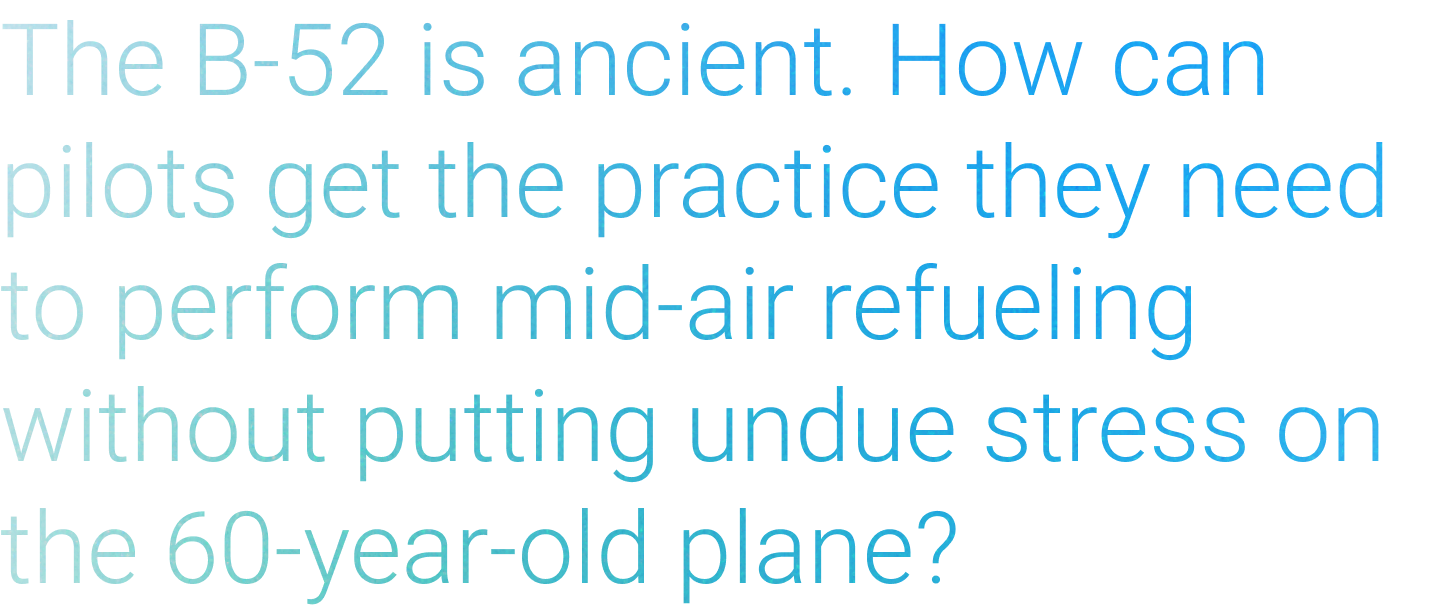

In early 2021, the U.S. Air Force sought to develop a new training program that would use simulation to revolutionize how B-52 pilots train to perform Air-to-Air Refueling. Among the requested technologies were sensors, haptics, assessment tools, and brain-machine interface. VR Training was selected to produce the mixed reality enhanced physical simulator, which would need to replicate the aircraft’s distinct cockpit to ensure the immersion of the pilots.
The MR platform prototype, built over seven months, was produced on time and lauded as the “most realistic to fly” after a performance test. In addition, the structure was “smooth and realistic in pitch and roll.” Military officials lauded VR Training as going “beyond what other Air Force AR/VR simulators can do in terms of flight realism and training efficiency.”
Project
Overview
Project Goal
B-52 MR Mid-Air Refueling Simulator
Project Duration
7 Months
The project created a dedicated B-52 air-to-air refueling training simulator using a lightweight chair incorporating mixed reality and open-source development technology. The project also provided a high-resolution simulation of a yoke, trim, and throttle, along with an AI virtual instructor and biometric feedback. Project submissions were evaluated by government personnel to ensure utility.
These technologies would recreate real-world situations that airmen face during day-to-day operations and functions.
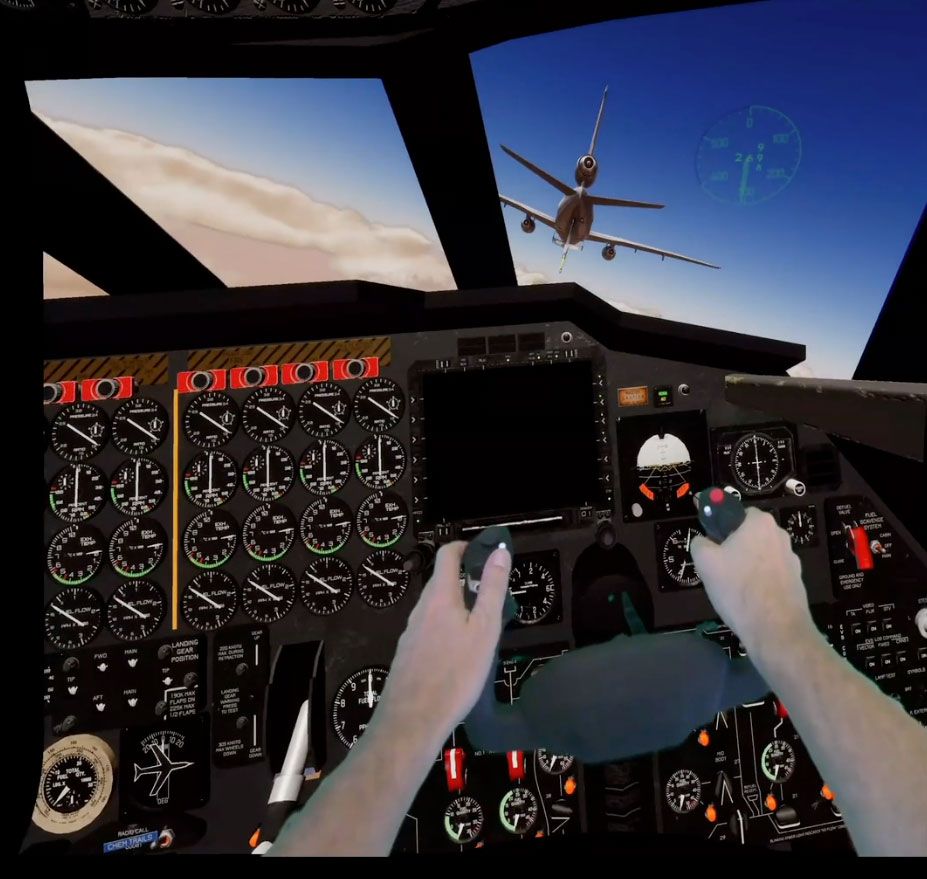
About the Project
The U.S. Air Force’s innovation hub sought a solution from industry, academia, or others to improve how B-52 pilots learn how to refuel in midair.
Problem Statement
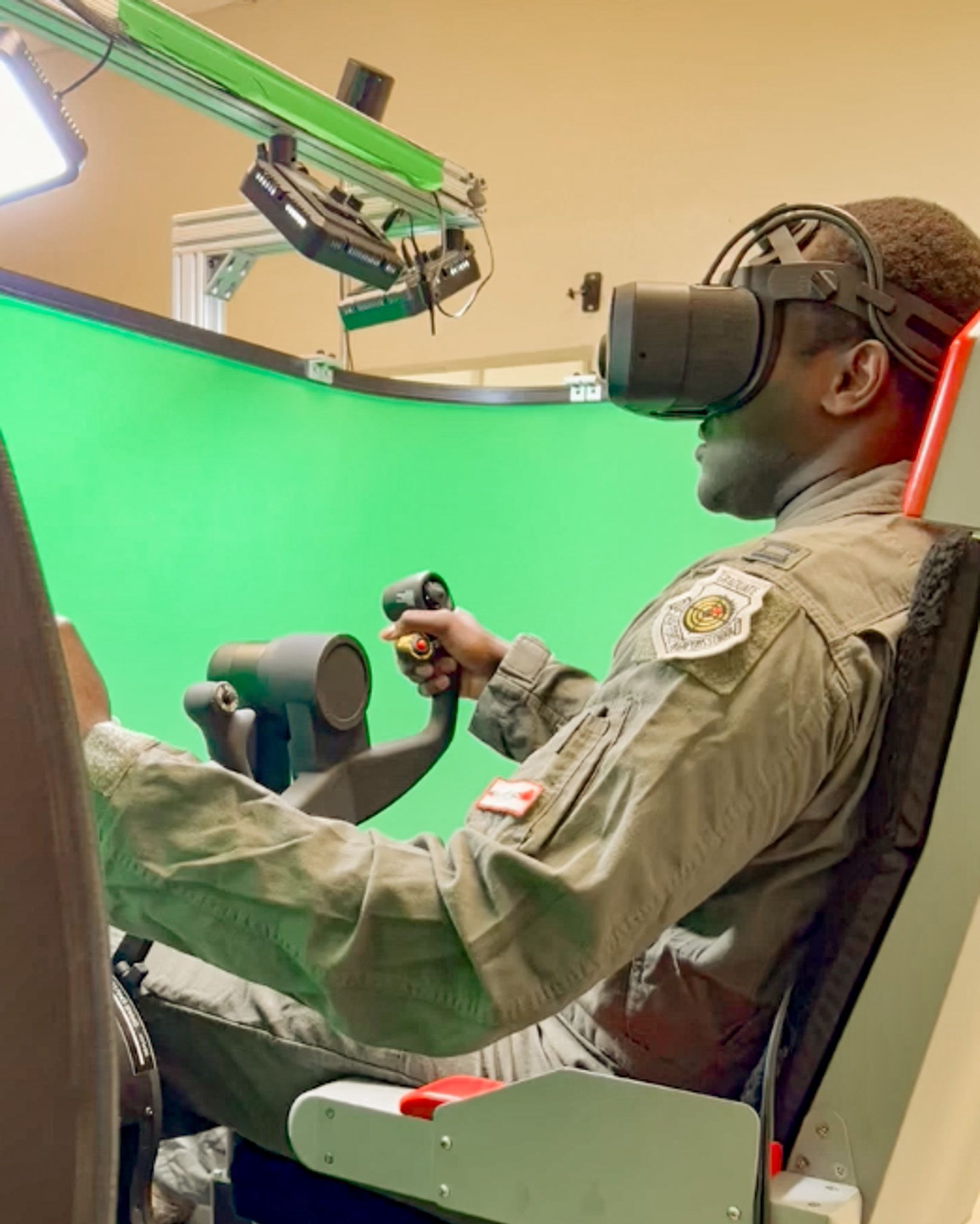
The ideal solution would pair a physical, realistic cockpit with yoke, trim and throttle with gaming software incorporating artificial intelligence and modeling software. In addition, the cockpit of the B-52 has to be the same exact dimensions - pilots determine the exact position to receive the tanker's fuel by lining it up in the overheard windows. As the profile of average military personnel gets younger, training options must incorporate the technology they have grown up with. In addition, there existed no virtual solutions that helped develop the fine motor skills and visual perception needed to accomplish air refueling skills.
Research
Strategize
Design
Prototype
Research
Strategize
Design
Prototype
Our
Process
As we embarked on the seven-month journey to create this solution for the military, the first step was to create a team of collaborators. In our proposal, we outlined specifically what we would do to match our product with the military’s requirements. The proposal detailed the technologies we would use, how they would be used, and what role they played in our finished product. This demystified emerging technologies while also displaying our expertise in these methods of development. The specific work was done in close collaboration with military subject matter experts, who helped us iterate on the fly, craft a specific solution that all parties would be satisfied with, and create the perfect product for their needs.
Project Timeline


Russ Mathers
STRIKEWERX Director

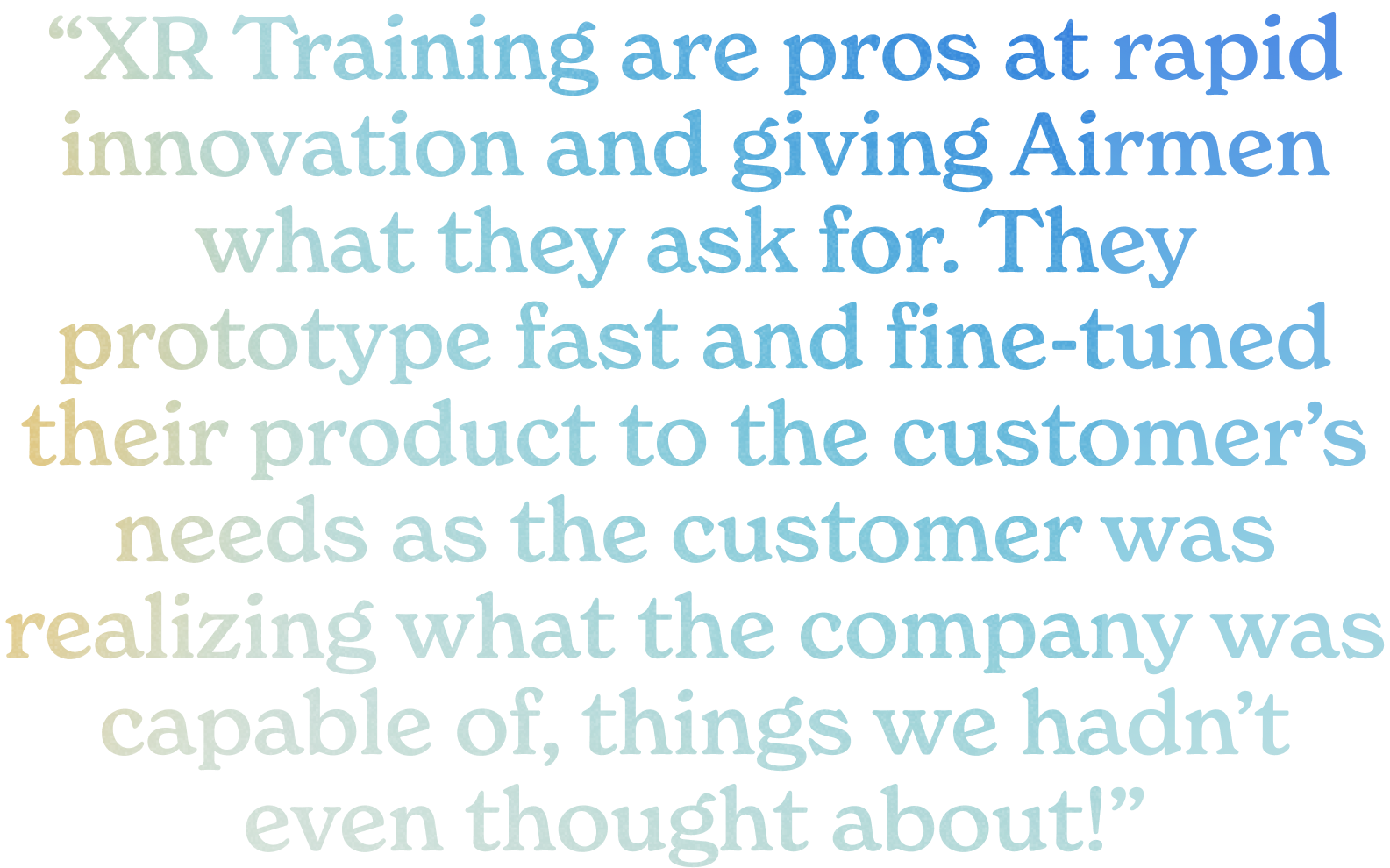
Using a lightweight moving chair and the latest mixed reality headsets, VR Training and our partners focused on overcoming weaknesses in existing B-52 simulators by integrating emerging technologies.
Project Solution
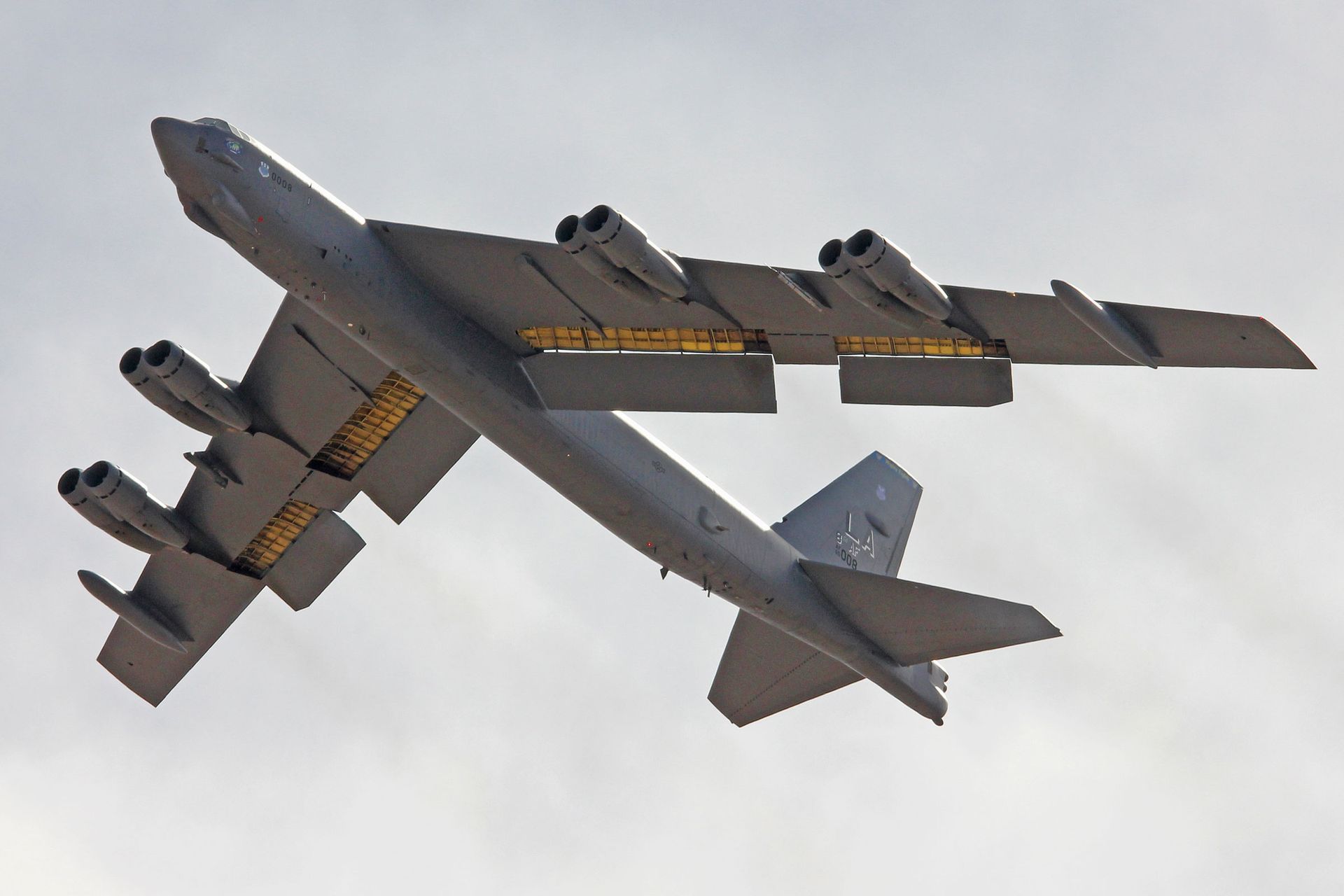
Using a lightweight moving chair and the latest mixed reality headsets, VR Training and our partners focused on overcoming weaknesses in existing B-52 simulators by integrating emerging technologies. To do so, we had our solution interface with magnetic force feedback flight controllers for high-res simulation. We also added an AI-driven virtual instructor biometric feedback and built it using Unity’s platform while integrating OpenXR and an Arduino-based interface. OpenXR allowed us to keep costs down and gave us flexibility for future headsets. Using a headset with 8K resolution, 146-degree field of view, foveated rendering and eye tracking allowed us to provide a solution the customer called the “most realistic to fly” and that the yoke was “smooth and realistic.” They also said that VR Training was “very responsive” to requests and that we worked very well with the customer.


